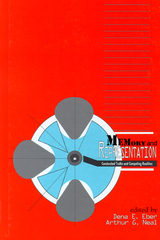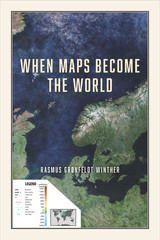3 books about Mental representation

Echo Objects
The Cognitive Work of Images
Barbara Maria Stafford
University of Chicago Press, 2007
Barbara Maria Stafford is at the forefront of a growing movement that calls for the humanities to confront the brain’s material realities. In Echo Objects, she argues that humanists should seize upon the exciting neuroscientific discoveries that are illuminating the underpinnings of cultural objects. In turn, she contends, brain scientists could enrich their investigations of mental activity by incorporating phenomenological considerations—particularly the intricate ways that images focus intentional behavior and allow us to feel thought.
As a result, Echo Objects is a stunningly broad exploration of how complex images—or patterns that compress space and time—make visible the invisible ordering of human consciousness. Stafford demonstrates, for example, how the compound formats of emblems, symbols, collage, and electronic media reveal the brain’s grappling to construct mental objects that are redoubled by prior associations. In contrast, she shows that findings in evolutionary biology and the neurosciences are providing profound opportunities for understanding aesthetic conundrums such as the human urge to imitate and the role of narrative and nonnarrative representation.
Ultimately, she makes an impassioned plea for a common purpose—for the acknowledgement that, at the most basic level, these separate projects belong to a single investigation.
“Heroic. . . . The larger message of Stafford’s intense, propulsive prose is unassailable. If we are to get much further in the great puzzle of ‘binding’—how the perception of an image, the will to act on intention, or the forging of consciousness is assembled from the tens of thousands of neurons firing at any one moment in time—then there needs to be action on all fronts.”—Science
[more]

Memory And Representation
Constructed Truths & Competing Realities
Elisabeth Dena Eber
University of Wisconsin Press, 2001
Eber and Neal address some of the theoretical issues connected with symbolic constructions of reality through human memory and its subsequent representation. Linkages between what we remember and how we represent it give humans their distinctive characteristics. We construct our reality from how we perceive the events in our lives and, from that reality, we create a symbol system to describe our world. It is through such symbolic constructions that we are provided with a usable backdrop for shaping our memories and organizing them into meaningful lines of action.
These case studies present a new and creative synthesis of the multiple meanings of memory and representation within the context of contemporary perceptions of truth.
These case studies present a new and creative synthesis of the multiple meanings of memory and representation within the context of contemporary perceptions of truth.
[more]

When Maps Become the World
Rasmus Grønfeldt Winther
University of Chicago Press, 2020
Map making and, ultimately, map thinking is ubiquitous across literature, cosmology, mathematics, psychology, and genetics. We partition, summarize, organize, and clarify our world via spatialized representations. Our maps and, more generally, our representations seduce and persuade; they build and destroy. They are the ultimate record of empires and of our evolving comprehension of our world.
This book is about the promises and perils of map thinking. Maps are purpose-driven abstractions, discarding detail to highlight only particular features of a territory. By preserving certain features at the expense of others, they can be used to reinforce a privileged position.
When Maps Become the World shows us how the scientific theories, models, and concepts we use to intervene in the world function as maps, and explores the consequences of this, both good and bad. We increasingly understand the world around us in terms of models, to the extent that we often take the models for reality. Winther explains how in time, our historical representations in science, in cartography, and in our stories about ourselves replace individual memories and become dominant social narratives—they become reality, and they can remake the world.
This book is about the promises and perils of map thinking. Maps are purpose-driven abstractions, discarding detail to highlight only particular features of a territory. By preserving certain features at the expense of others, they can be used to reinforce a privileged position.
When Maps Become the World shows us how the scientific theories, models, and concepts we use to intervene in the world function as maps, and explores the consequences of this, both good and bad. We increasingly understand the world around us in terms of models, to the extent that we often take the models for reality. Winther explains how in time, our historical representations in science, in cartography, and in our stories about ourselves replace individual memories and become dominant social narratives—they become reality, and they can remake the world.
[more]
READERS
Browse our collection.
PUBLISHERS
See BiblioVault's publisher services.
STUDENT SERVICES
Files for college accessibility offices.
UChicago Accessibility Resources
home | accessibility | search | about | contact us
BiblioVault ® 2001 - 2025
The University of Chicago Press









